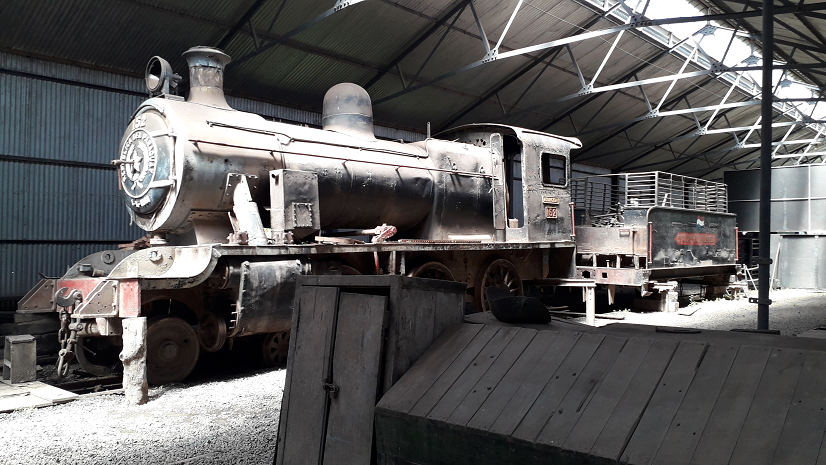The small town of Sapucai is located approximately 90 km to the east of Asuncion. When trains ran in Paraguay it was the location of the railway workshops.
These have been preserved as a museum to 19th century industrial Paraguay.
Sapucai is located a little distance from my home but consulting a map I found what appeared to be a much shorter route there.
Rather than travelling around the hills as the metaled road seemed to do there appeared to be a dirt road that cut straight over the hills. This looked like it would cut the distance in half. Accordingly it was the route I chose to take.
However I soon found that rather than dirt much of the road was lined with rough cobbles. By far my least favourite surface for travelling over. By the time I had crossed the hills every bone had been thoroughly shaken.
As the I had saved distance but not time and had a quite unpleasant time doing it I chose to return the long way along the metaled road. A much better experience.
Once I did finally reach Sapucai the museum was well signposted and easy to find.
Outside sitting on the grassed over track I found a well restored steam engine and a cattle carriage along with a little crane. The old station building could also be seen. Smartly painted but all locked up.
The only thing missing was people.
Heading over to what I presumed was the workshop I made a little noise outside a closed door which did seem to get the intention of someone inside.
Shortly the door was opened by a young woman who looked a little surprised to be receiving a visitor. Keen though to have one I was soon ushered inside and directed towards the workshops.
From her I learnt that the museum gets few visitors and exists almost unknown to the local population. In all the time I remained there no one else arrived arrived and when I left the door was closed back up until someone else should stumble upon it.
This makes the museum at Sapucai a hidden gem in every sense. It records a time in the mid 19th century when Paraguay was seeking to rapidly modernize and has then been left looking as though the workers have only just walked away.
Sapucai is somewhere missed off all but the most dedicated of tourist agendas.
Inside the workshop apart from a new roof looked structurally as it would have done over 150 years ago.
Items have though where possible been placed in related groups making viewing simpler.
Along one side of the building were a number of old stream engines. These ranged from almost complete to thickly covered in rust through to the final one which was little more than a rusty boiler.
In other places these engines would have been restored and repainted but here protected from the elements further decay has been all but halted. Their decayed state serving as a good symbol for the decline of the Paraguayan railways and the industry that supported them.
In common with everything else in the workshop the engines were British made. The information board in front of one describing how it had been manufactured in Sheffield.
The other side of the workshop is given over to the machinery of heavy industry. As with the trains it all dates from the mid to late 19th century. Here are the lathes, drills and presses that would have thundered away all day long under the baking Paraguayan sun.
The British origin of the everything is displayed by the plaques announcing their places of manufacture.
I say British as although much originates in industrial towns such as Leeds and Bradford ones large iron device was proudly stamped “Glasgow”.
The machines that could be moved have been grouped together either as metal or woodworking tools.
Some though could never be moved. These remain where they have always been. From these largest machines belts still run round large iron wheels along a central drive shaft running high along the ceiling of the workshop.
These belts and wheels would have been familiar features in any Victorian mills.
Here though there was no rushing water to turn a wheel. Instead all was driven by a great steam engine.
Again some may wish for a little smartening up to be done. I however prefer the dusty abandoned look of the machinery. I feel it is more authentic.
Outside the main workshop there is a second covered area. This was once a small forge. There iron could be cast into the forms required by the railways. It must have been a very challenging place for the workers to spend their days.
Beyond these lay a row of low buildings. These I would imagine were the workshop offices and the ones that were not shut up appeared to still serve that purpose.
A use these buildings would have elsewhere has not reached Sapucai. For none are occupied by the gift shops and cafe that could bring in a little extra income. Any refreshments would need to be bought as a picnic and enjoyed in the car park.
The lack of visitors and its overlooked state clearly limit the funds that are available to work on and restore the exhibits. However this does ensure the museum remains a and simple and honest place preserving a much overlooked part of Paraguayan history.


Recent Comments